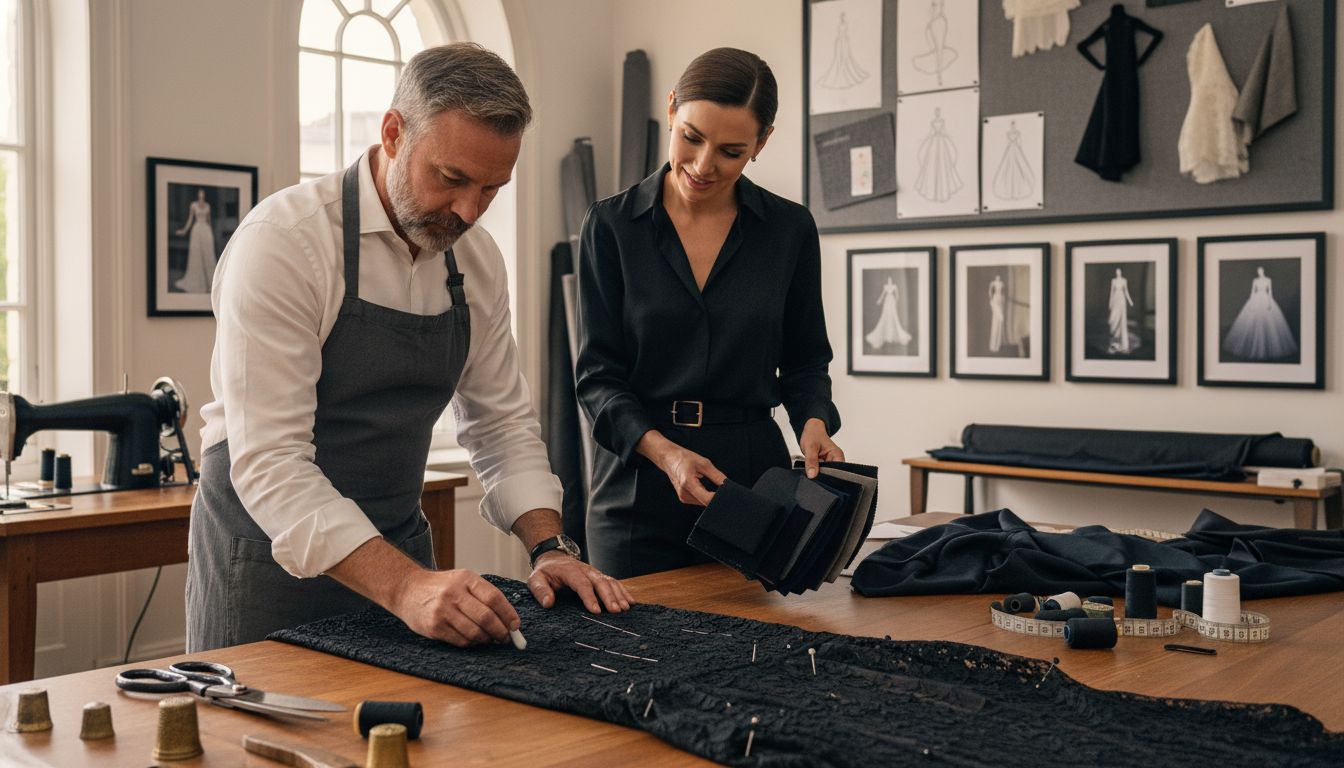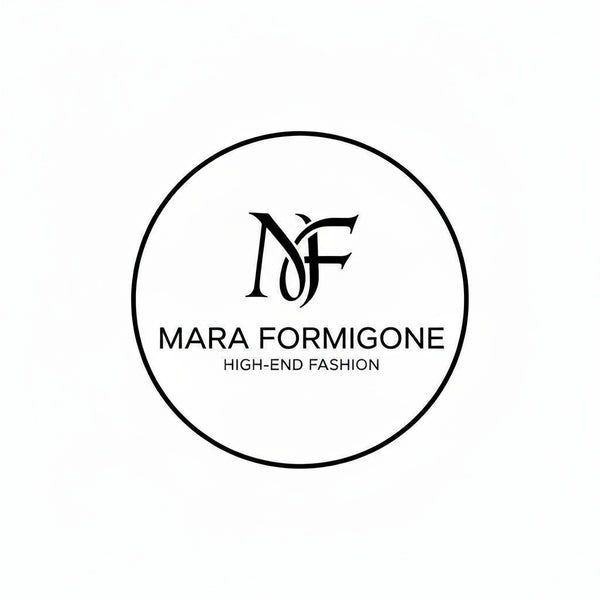Did you know that over 70 percent of people say their clothing choices reflect their personal identity? Choosing signature designer pieces is more than just following fashion trends. It is about finding items that truly represent you. With the right approach, you can transform iconic garments into something that feels uniquely your own, combining timeless quality with personal touches that tell your story.
Table of Contents
- Step 1: Select Signature Designer Pieces
- Step 2: Assess Customization Options and Limits
- Step 3: Incorporate Personalized Elements and Accessories
- Step 4: Collaborate With Expert Tailors or Artists
- Step 5: Review and Refine Your Customized Look
Quick Summary
| Key Point | Explanation |
|---|---|
| 1. Select iconic designer pieces | Choose legendary items that resonate with your style and elevate your wardrobe. |
| 2. Assess customization carefully | Ensure modifications respect the designer’s original vision while enhancing your personal expression. |
| 3. Personalize with meaningful accessories | Integrate unique items that reflect your personal journey without overwhelming the base garment. |
| 4. Collaborate with skilled professionals | Work with tailors or artists who understand design nuances to truly transform your garment. |
| 5. Evaluate your customized look critically | Review your piece from multiple angles and gather feedback to ensure it meets your style goals. |
Step 1: Select Signature Designer Pieces
Selecting signature designer pieces is about discovering iconic items that elevate your personal fashion narrative. According to uen.org, these are legendary items that define a designer’s unique style and serve as foundational elements for personalizing your wardrobe.
To choose your signature designer pieces, start by researching iconic designs that resonate with your personality. As metmuseum.org highlights, designers like Charles James created architectural pieces that transform a wearer’s silhouette. Look for items that go beyond mere clothing and become statements of individual expression. Consider timeless classics like a perfectly tailored blazer, an elegant wrap dress, or a structured handbag that speaks to your aesthetic sensibilities.
When hunting for signature pieces, prioritize quality and personal connection over trends. Ask yourself if the item makes you feel confident and authentically represents your style. Remember that a true signature piece is not just about the label it carries but the story it tells about you. Pro tip: Select pieces that can be styled multiple ways to maximize versatility and ensure your investment truly enhances your wardrobe.
Step 2: Assess Customization Options and Limits
Customizing designer fashion requires a delicate balance between personal expression and preserving the original design’s integrity. According to fitnyc.edu, understanding the fundamental elements of fashion design—shape, line, color, and texture—is crucial when considering potential modifications to a designer piece.
Start by carefully evaluating the structural components of your designer item. As metmuseum.org illustrates through Karl Lagerfeld’s iconic designs, there is a critical balance between ornamental elements and the core structural lines of a garment. This means that while personalization is important, you must respect the original designer’s vision. Consider consulting a professional tailor who specializes in high end designer pieces. They can provide expert guidance on what alterations are possible without compromising the item’s essential design and quality.
When assessing customization options, remember that not every piece can or should be dramatically altered. Some designer garments are meant to be appreciated in their original form. Your goal is to find subtle ways to make the piece feel uniquely yours while maintaining its fundamental aesthetic. Pro tip: Always test potential customizations on a small, inconspicuous area first and consider the long term impact on the garment’s value and wearability.

Step 3: Incorporate Personalized Elements and Accessories
Personalizing designer fashion is about transforming beautiful garments into unique expressions of your individual identity. As nmaahc.si.edu demonstrates through Sheila Bridges’ ‘Harlem Toile’ design, integrating culturally significant patterns and motifs can dramatically enhance a piece’s personal significance.
Start by selecting accessories and embellishments that tell your story. According to nmwa.org, artists like Faith Ringgold have shown how personal narrative can be woven into fashion through carefully chosen elements. Consider adding meaningful pins, unique scarves, statement jewelry, or custom embroidery that reflects your personal journey. Think beyond simple decoration and focus on pieces that spark conversation and represent your authentic self.
When incorporating personalized elements, subtlety is key. The goal is to complement your designer piece rather than overwhelm it. Pro tip: Choose accessories with a cohesive color palette or thematic connection to your base garment.
Experiment with layering techniques that allow your personal touches to enhance rather than compete with the original design. Remember that true personalization is about creating a harmonious blend that feels both intentional and effortless.
Step 4: Collaborate With Expert Tailors or Artists
Taking your personalized designer fashion to the next level requires strategic collaboration with skilled professionals who can transform your vision into reality. According to kent.edu, the most innovative fashion transformations emerge from meaningful partnerships between designers and skilled artisans who understand the nuanced art of customization.
Begin by researching local tailors and artists who specialize in high end designer alterations. As metmuseum.org highlights through their Costume Institute exhibitions, truly remarkable personalization happens when creative professionals work together to push design boundaries. Schedule initial consultations where you can discuss your vision, bringing reference images and the specific designer piece you want to customize. During these meetings, be clear about your personal style goals while remaining open to expert recommendations about what modifications will best preserve the garment’s integrity.
When selecting a collaborator, look beyond technical skills and seek someone who demonstrates genuine artistic understanding. Pro tip: Request to see their portfolio of previous designer alterations and ask about their experience with similar pieces. The right professional will not just modify your garment but will help you create a truly unique piece that reflects your individual aesthetic while respecting the original design’s essence.
Step 5: Review and Refine Your Customized Look
The final stage of personalizing designer fashion is a critical moment of evaluation and refinement. According to exhibitions.fitnyc.edu, the ‘Uniformity’ exhibition emphasizes the importance of carefully assessing the coherence and balance of your customized ensemble to ensure a polished and intentional appearance.
Begin by critically examining your personalized piece from multiple angles and in different lighting conditions. As metmuseum.org notes through Karl Lagerfeld’s perspective that ‘art is art and fashion is fashion,’ maintaining the artistic integrity of the original design while expressing your personal style requires meticulous attention to detail. Photograph yourself wearing the customized piece and review the images objectively. Pay close attention to how the modifications interact with the original design lines, the fit, and the overall silhouette.
Seek honest feedback from trusted friends or fashion savvy individuals who can provide constructive criticism. Pro tip: Take time to live with the piece for a few days before making final decisions. Sometimes initial impressions change with wear, and what seems perfect in the moment might need subtle adjustments. The goal is to create a personalized piece that feels authentic to your style while respecting the original designer’s vision.
![]()
Elevate Your Style with Personalized Designer Fashion
Personalizing designer pieces can be challenging when you want to balance authenticity, quality, and your unique expression. This guide highlights the importance of choosing signature pieces, exploring customization possibilities, and collaborating with expert artisans. If you’ve ever felt limited by off-the-rack luxury fashion or unsure how to make iconic designs truly yours, you are not alone. Many seek that perfect harmony between a designer’s vision and their own personal story.
Explore a curated selection of designer dresses, accessories, and shoes that form the perfect foundation for your custom style journey.

Discover how luxury fashion at Mara Formigone can inspire your next personalized look. Browse signature pieces from Gucci, Prada, and Alexander McQueen, all ready to become your canvas for self-expression. Don’t wait to create a wardrobe that tells your story with confidence. Start transforming your style today by visiting Mara Formigone’s collection and experience luxury you can truly make your own.
Frequently Asked Questions
How can I select signature designer pieces that fit my style?
Selecting signature designer pieces involves researching iconic items that resonate with your personal taste. Start by identifying classic styles that reflect your aesthetic, such as tailored blazers or elegant dresses, and consider how each piece makes you feel confident and authentic.
What are the best ways to customize designer fashion without ruining the original design?
To customize designer fashion while preserving its integrity, evaluate the garment’s structural elements and consult a professional tailor. Focus on subtle modifications that enhance the piece, such as adjustable hems or custom embroidery, ensuring changes respect the original design’s vision.
How can I incorporate personalized elements into my designer pieces?
To personalize your designer pieces, select accessories and embellishments that reflect your unique story. Consider adding meaningful pins, custom embroidery, or statement jewelry that enhances your outfit while maintaining a cohesive look.
What should I discuss with a tailor when customizing my designer fashion?
When meeting with a tailor, clearly communicate your vision for customization while remaining open to their expert suggestions. Bring reference images, describe your personal style goals, and ask how to best preserve the original design during modifications.
How can I evaluate my customized piece to ensure it meets my style?
Evaluate your customized piece by examining it from multiple angles and in different lighting conditions. Take pictures to assess how the modifications interact with the original design and seek honest feedback from trusted friends before making final decisions.
What steps can I take if I’m not satisfied with my customized designer piece?
If you’re not satisfied with your customized designer piece, revisit it after wearing it for a few days to see if your impressions change. Identify specific areas that need adjustment, and communicate these to your tailor or designer for refinements.

